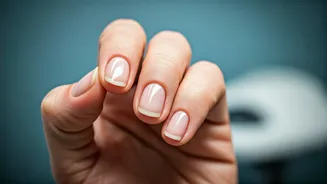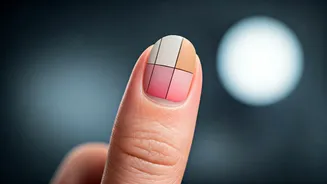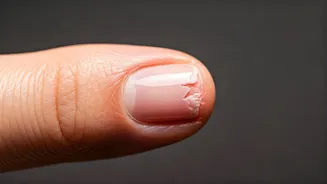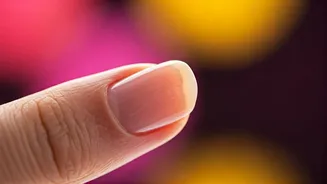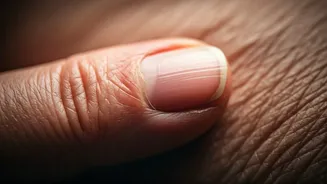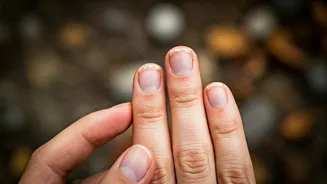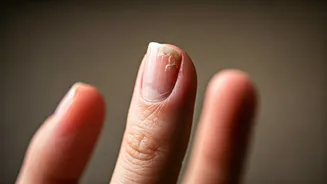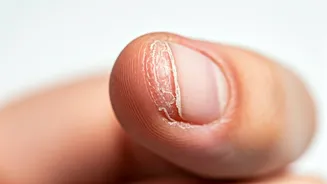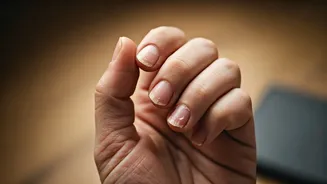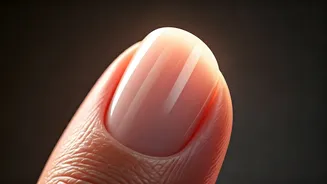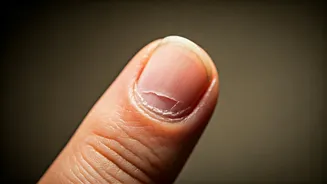Nail Appearance Matters
The condition of your nails offers valuable insights into your general health. Nails can change in various ways, reflecting systemic problems or nutritional
deficiencies. Changes in nail color, texture, thickness, or shape can signal underlying conditions that require attention. Observing these changes can help in early detection and management of potential health issues. For instance, the presence of ridges, spots, or alterations in nail growth can point towards several health concerns.
Color Variations Explained
Nail color changes can be significant indicators of health issues. For example, nails that appear yellowish might suggest fungal infections or, in more severe cases, could be linked to thyroid problems, diabetes, or respiratory diseases. Bluish nails, on the other hand, might indicate insufficient oxygen levels in the blood, possibly associated with heart or lung conditions. Pale nails can suggest anemia or poor circulation. Red or brown streaks under the nails warrant attention, as they could indicate bleeding or other underlying problems that warrant medical consultation. Any change in nail color should prompt further investigation to ascertain the underlying cause.
Texture and Shape Clues
The texture and shape of your nails provide further clues about your health. Ridges, whether vertical or horizontal, can suggest different conditions. Vertical ridges are often harmless and may be a natural part of aging, but a sudden increase could indicate nutrient deficiencies or inflammatory conditions. Horizontal ridges, known as Beau's lines, often appear after a major illness or stress, temporarily halting nail growth. Spoon-shaped nails (koilonychia) can signal iron deficiency anemia, while clubbing (thickening and curving of the nails) can be associated with lung diseases, heart conditions, or liver problems. The shape of nails, thus, can be a useful diagnostic tool.
Thickness and Thinness Insights
Nail thickness and thinness can be indicative of underlying health conditions. Thickened nails may be due to fungal infections, psoriasis, or poor circulation. Extremely thin nails that break or split easily can be a sign of iron deficiency, thyroid issues, or malnutrition. Brittle nails are commonly associated with aging, repeated exposure to water or chemicals, and can be related to a lack of certain vitamins. The condition of the nail's thickness is influenced by various factors, and changes should be observed alongside other symptoms for a comprehensive health assessment. Regular nail care can help in observing these changes more effectively.
Spots and Markings Unveiled
Spots and markings on your nails provide important clues about your health. White spots (leukonychia) are usually harmless and often result from minor injuries. However, multiple or prominent white spots could suggest mineral deficiencies. Pitting, or small depressions, on the nail surface is commonly associated with psoriasis or eczema. Dark streaks or lines under the nail (melanonychia) should be evaluated, as they may be indicative of melanoma, a serious form of skin cancer. Any unusual markings on the nails should be monitored and reported to a healthcare professional for accurate diagnosis and management. Early detection can improve outcomes.
Cuticle and Skin Health
The health of the skin around the nails, including the cuticles, is also an important aspect to consider. Redness, swelling, or tenderness around the nail bed could indicate an infection or inflammation, such as paronychia, which is often caused by bacteria or fungi. Dry, cracked cuticles can signal a lack of moisture or an underlying skin condition. Ignoring these signs can lead to more serious issues, such as bacterial infections or the spread of skin conditions. Keeping the cuticles moisturized and paying attention to any changes in the skin surrounding the nails is integral to maintaining overall nail and hand health.
When to Seek Advice
If you notice any significant changes in your nails, it is crucial to consult a healthcare professional. Persistent color changes, unusual thickness or thinness, significant changes in shape, or the appearance of spots or markings warrant evaluation. Furthermore, any pain, swelling, or pus around the nails should be addressed promptly to prevent infections from spreading. Early diagnosis and treatment are essential for effectively managing underlying health issues and ensuring optimal health outcomes. Don't hesitate to seek medical advice if you are concerned about your nail health.
Nail Care and Prevention
Practicing good nail care can help in maintaining nail health and preventing various issues. Keeping nails clean and dry, avoiding biting or picking, and moisturizing the cuticles are fundamental practices. Protective measures like wearing gloves when using harsh chemicals or washing dishes can prevent damage and reduce the risk of infections. Regular trimming of nails can also prevent ingrown nails and bacterial build-up. A balanced diet that is rich in vitamins and minerals is important for healthy nail growth. By following these simple steps, you can help in keeping your nails healthy and reflective of your overall well-being.
